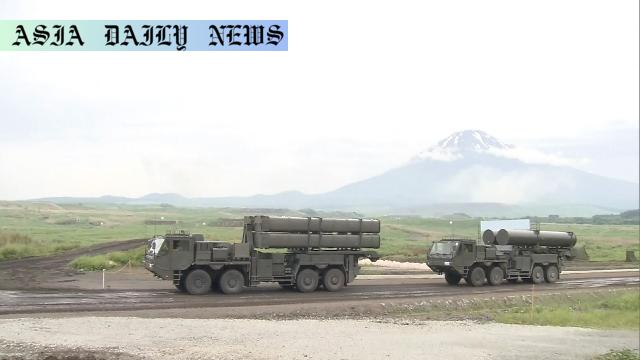Defense – Japan’s 2025 defense white paper emphasizes the need to strengthen military capabilities amidst growing Chinese activities.
The report expresses deep concerns over Chinese military activities near Japan’s airspace and waters.
It notes increasing military cooperation between North Korea and Russia, affecting security in Ukraine.
Japan highlights the deployment of stand-off missiles and satellite constellations to boost security.
Initiatives to improve conditions for SDF personnel and address recruitment shortages are underway.

Japan’s Deep Concerns Over Growing Regional Instabilities
Japan’s latest defense white paper for 2025 has made headlines with its firm stance on mitigating rising security challenges. The report has emphasized mounting concerns over China’s aggressive military activities, which include the unsettling intrusion of Japanese airspace by a Chinese military aircraft for the first time last August. Additionally, actions such as a Chinese aircraft carrier entering Japan’s contiguous zone in September further illustrate the escalation of tensions in the region.
The white paper delves into the implications of these activities, arguing that they could have serious ramifications for Japan’s security and stability. The tone of the report signifies that the Japanese government perceives China as a growing threat, prompting calls for swift and comprehensive defensive measures.
North Korea’s Alignment with Russia: A Broadening Threat
The report also sheds light on the troubling alignment of North Korea with Russia, noting that Pyongyang has significantly stepped up its cooperation with Moscow. Specific mentions include the supply of ballistic missiles and other weapons, as well as the alarming possibility of North Koreans enlisting to support Russia’s military efforts in Ukraine. This dynamic not only destabilizes the Korean Peninsula but also exacerbates tensions globally, leaving countries like Japan grappling with enhanced regional risks.
Strengthening Japan’s Defense Capabilities
In response to these evolving threats, the defense ministry has unveiled robust plans to bolster Japan’s military capabilities. One of the key measures includes the deployment of stand-off missiles capable of striking targets from outside enemy attack range. These missiles are part of a larger strategy to create counterstrike capabilities, aligning with Japan’s evolving defense posture.
Moreover, the ministry intends to develop and deploy a satellite constellation comprising multiple linked satellites for enhanced intelligence gathering. These systems aim to provide detailed target information, reaffirming Japan’s commitment to adopting cutting-edge technologies to safeguard its interests.
Addressing Personnel Challenges Within the SDF
Japan also aims to improve conditions for its Self-Defense Forces (SDF). The white paper acknowledges the challenges posed by recruitment shortages and has outlined a basic plan to increase personnel wages, improve living conditions, and raise the retirement age of SDF members. Additionally, the establishment of the Joint Operations Command earlier this year reflects a concerted effort to streamline decision-making within the Ground, Maritime, and Air Self-Defense Forces. These measures highlight Japan’s intent to ensure rapid and cohesive responses in the face of crises.
As the geopolitical environment in East Asia grows increasingly precarious, Japan’s white paper underscores the nation’s resolve to adapt and prioritize its defense capabilities. Through advanced military systems, stronger personnel policies, and innovative technologies, the paper offers a clear roadmap to navigate complex challenges ahead.



Commentary
The Rising Threats in East Asia: Japan’s Perspective
Japan’s latest defense white paper illustrates a confident and necessary response to the growing complexities of regional geopolitics. The increasing assertiveness of China, particularly in its military maneuvers near Japan’s borders, has rightly prompted alarm in Tokyo. Actions such as airspace intrusions and the presence of a Chinese aircraft carrier in Japan’s contiguous zone are not merely symbolic provocations; they represent a broader shift in China’s military strategy that directly impacts Japan’s security stance.
North Korea’s Role in Heightening Global Risks
The collaboration between North Korea and Russia adds yet another layer of complexity to Japan’s security concerns. Pyongyang’s decision to support Russia militarily, particularly in Ukraine, is indicative of how alliances are forming between authoritarian regimes. This alignment poses both a direct and indirect threat to Japan, urging the nation to recalibrate its defense policies to account for these evolving dynamics. The fears of North Koreans dispatching troops also foreshadow potential escalation in regional hostilities.
Japan’s Defense Strategy: A Well-Timed Overhaul
What stands out most in Japan’s response is the multifaceted approach to strengthening its defense. The deployment of stand-off missiles and satellite constellations demonstrates Tokyo’s reliance on technology to counter threats effectively. Similarly, the focus on personnel welfare showcases a critical understanding of the need to sustain and motivate its defense forces. Such measures will not only boost morale but also ensure that the next generation of recruits is incentivized to join the SDF.
In conclusion, Japan’s 2025 defense white paper signals a transformative moment for the nation. By addressing external threats and internal challenges head-on, Japan is proactively shaping its security future to safeguard its sovereignty and regional stability amidst a turbulent landscape.